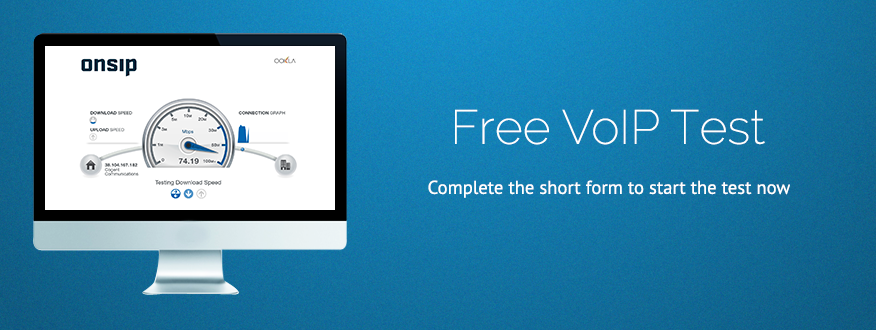A free, comprehensive VoIP quality test. See how your network performs now!
Complete this short form to begin your VoIP Test, which measures key performance indicators for VoIP quality on your network. Specifically the VoIP Test performs true socket-based and HTTP tests from your browser to determine latency down to the millisecond. It uses gigabit+ speeds to determine how much inbound and outbound traffic your connection can consistently handle (upload and download speeds). Finally, the VoIP test also diagnoses jitter through ping time fluctuations.

See explanations of the scores below. These will also appear on your results page.
To maintain quality VoIP service, you must have enough bandwidth on your network to support VoIP call traffic. Measured in bits transferred per second, bandwidth is the maximum throughput of a network. For VoIP, enough bandwidth must be supplied to allow for the transmission of voice data in real time.
We recommend 100 kbps per simultaneous call.
A good rule of thumb is to consider 1/10 of your organization is on the phone at any given time, or 100 kbps for every 10 employees. You can verify you are receiving the bandwidth promised by your Internet provider with this test. Check the upload and download speed against your ISP's Service Level Agreement.
Measured in milliseconds, Jitter is the variation in packet transit delays (from serialization, propagation, and buffering effects on the stream). Jitter is significant to real-time applications because the receiver must dimension its jitter buffer based on maximum jitter, which adds delays for all packets and causes eventual loss when jitter values exceed buffer capacity. Simply put, callers will notice Jitter as poor audio quality.
We recommend < 3 ms in jitter.
Latency is the amount of time it takes for sound to travel from one call participant to another. Expressed in milliseconds, latency specifically measures the time it takes to move a VoIP packet from one point to another. Unlike Jitter, latency doesn't usually degrade the sound quality. However, when latency is over 150ms, callers will start to notice the delay.
We recommend latency is <150 ms.